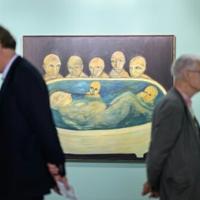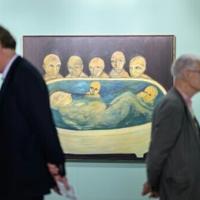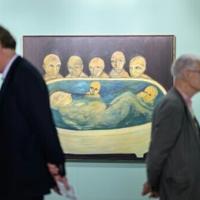Despite global economic concerns, the art market remains stable.
Singapore’s art market has demonstrated resilience amidst economic uncertainties, following the surge in online art sales globally which accounted for 18% of the market’s total turnover.
“I’m a very worried person. So you know here about the global markets that are not great, and the economy that is not great,” Motti Abramovitz, CEO and owner of Bruno Art Group acknowledged. “But at that time, I remind myself that my family made a living for art for over 100 years.”
Abramovitz emphasised the enduring value of art, citing its historical significance and the profession’s deep roots. “Art is one of the most traditional professions in the world, it’s existed for 1000s of years,” he said.
With a larger global population and an increasing number of people who can afford art, Abramovitz believes the market will continue to thrive. “With the growth of people who can afford, of course, saying it’s my interest, but I think that art will exist and will exist forever,” he stated.
While acknowledging the possibility of economic fluctuations, Abramovitz remains confident in the art market’s long-term stability. “Of course, there may be ups and downs, but even if we looked in the past for big recessions, it’s nothing to compare to when there is a recession in the stock market,” he explained. “So I’m very optimistic.”
The resilience of the art market is also reflected in the performance of Bruno Gallery this year. “This is our 14th year in Singapore, and except, of course, of the time during Covid, which was also quite okay, we are always on the rise,” Abramovitz said. “So as of now, the numbers of this year are very good for us compared to last year.”
Consumer trends further underscore the art market’s adaptability and resilience. “Actually, people are moving more and more towards decorative art, more modern art. The young generation are getting less and less into traditional art,” Abramovitz observed. “So we do very well with pop art, kinetic art. The new homes are very modern, and the owners want art that will fit this modern style.”
The surge in online art sales, reaching $11.8 billion last year and accounting for 18% of the market’s total turnover, has further bolstered the market’s resilience. “Traditional galleries should definitely take advantage of this phenomena in our niche, in our market,” Abramovitz noted.
This post was originally published on this site be sure to check out more of their content



